If you keep backyard chickens, then you know that they love taking a chicken dust bath. But did you know that there are many different ways to give your chicken(s) a bath? What are the best dust bath ideas for keeping your backyard flock happy and healthy?
A dust bath is an important part of a chicken’s grooming routine. It helps to remove dirty areas and parasites from the chicken’s body. Baths also help to keep a chicken’s skin healthy and free from disease.
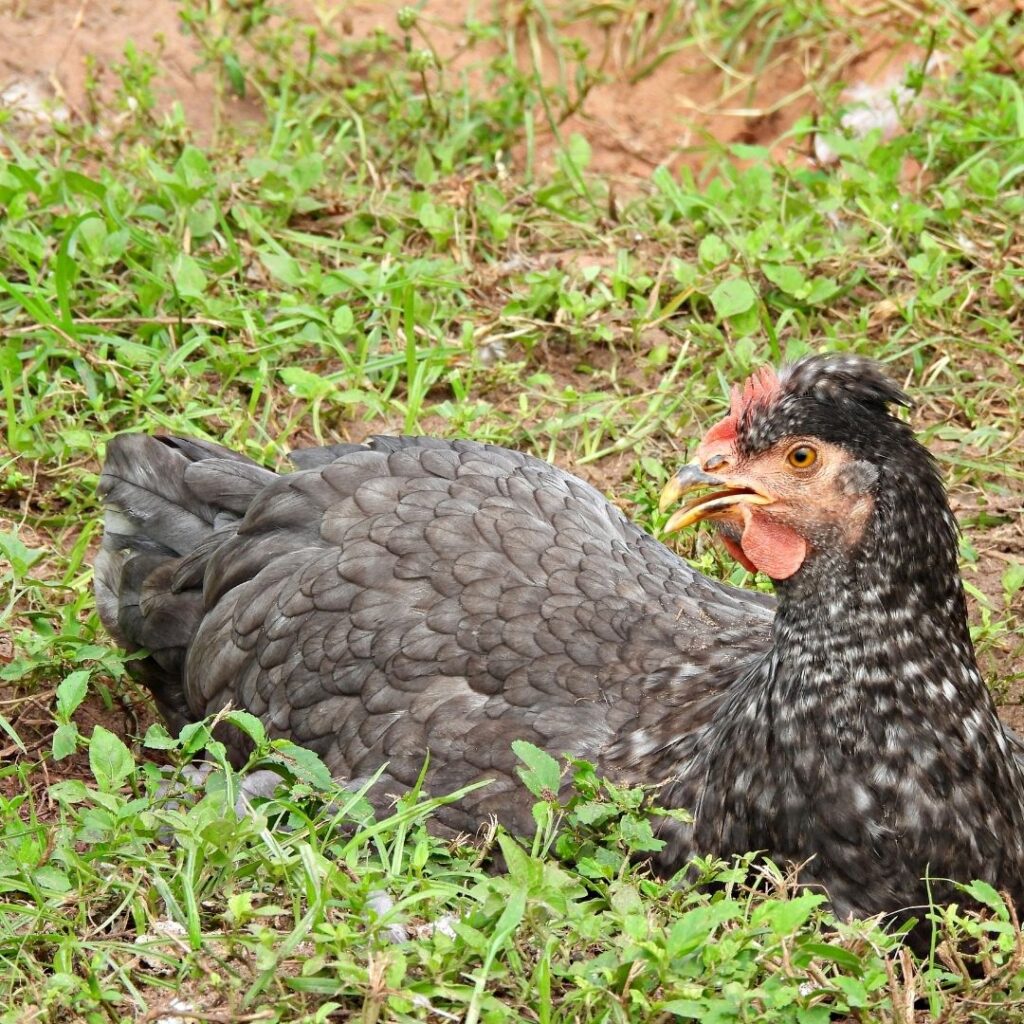
Benefits of Bathing Areas for Backyard chicken keepers
Chickens need dust baths to stay healthy and happy. Here are some reasons why you should care:
- Chickens that don’t have a dust bath can get sick.
- Dust baths help a chicken’s ability to get rid of mites and lice.
- A dust bath for chickens can keep their feathers clean and healthy.
- Less likely to be bored or stressed.
- Healthy hens will lay more eggs.
So, if you’re a backyard chicken keeper or hobby farmer, providing your birds with a dust bath is as essential as providing shelter, water, and feed.
An unhealthy flock could lead to the spread of disease, and reduced production of eggs, and yes, these mites and lice can pass on to humans!
A bath area helps your birds keep clean and in good condition.
It’s also a fun activity for your chicken and their pals to do!
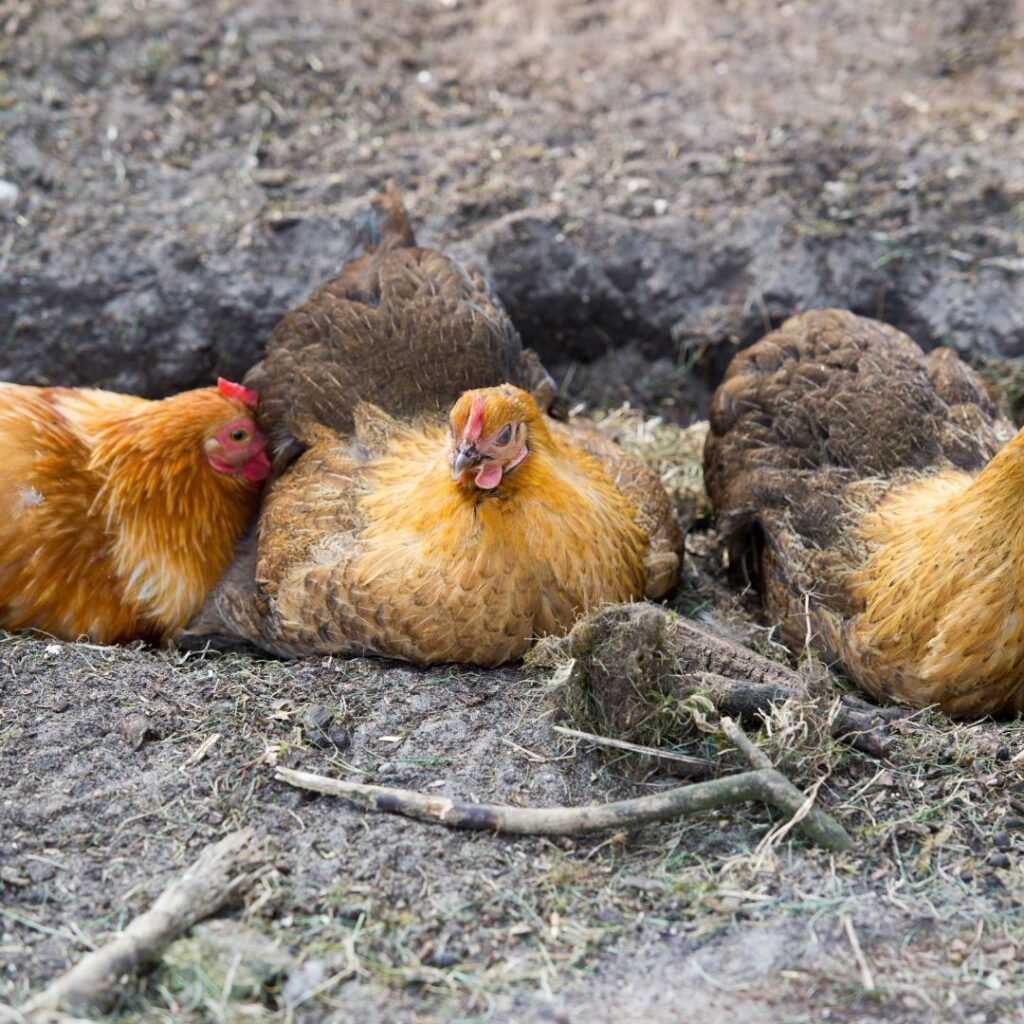
What is a Dust Bath For Chickens?
A dust bath is a mixture of dry, loose dirt and sand that chicken(s) enjoy rolling around in to clean their feathers and keep themselves cool.
Some of the best and easiest DIY chicken dust bath ideas for keeping your backyard flock happy and healthy include:
Building a Dust Bathing Area:
This can be as simple as placing a container filled with sand or dry dirt in the chicken coop or run.
Container ideas are everywhere. We’ve given you a handful of ideas below but really, just use your imagination, this does not need to be anything pricey when starting a dust bathing area.
Pre-made chicken dust bath areas can be:
- Kiddie Pool
- Child-sized sandbox
- Horse waterer (trough)
- Plastic storage tubs
- Cement mixing tub
- An old tire, truck tire, tractor tire
DIY/ Constructing ideas:
- Wooden box construction using 2x4s (no bottom needed)
- Place stones in a circle or square, similar to a fire pit area
- Cinder blocks in a square box shape similar to a raised bed
- Any landscape edging materials can make for a nice shallow dust bath area.
Creating a dust bath bar:
This is a fun way to provide your chickens with a dust bath. Simply place some sand or dirt in a shallow container and add some chicken-friendly toys.
Making a dust bath pool:
If you have the space, you can make a dust bath pool for your chickens. Simply fill a kiddie pool with sand or dry, loose dirt and let your chickens enjoy.
A kiddie pool can be a fun and easy way to create a dust bath for your chickens. It’s important to use a kiddie pool because it’s shallow and the chickens can easily get in and out. It’s also important to use a kiddie pool because it’s made of plastic and is easy to clean.
Adding a kiddie pool to your backyard chicken coop is important for a few reasons. First, it provides the chickens with a place to bathe. Second, it helps to keep the chickens cool in the summer months. Third, it allows the chickens to get exercise, which is important for their overall health.
Making a portable chicken dust bath
A portable dust bath is great for backyard chicken owners that are using chicken tractors.
Find an old kids’ wagon to trail along to your mobile unit. Another way is to put wheels from the hardware store right onto the bottom of a cement mixing tub. To be honest, most containers can just be dragged across the grass with ease if you don’t overfill them. The key with the portable units is to put them away in a dry place at the end of your day.
Allowing chickens to free range:
If you have space, letting your birds out for a day of free-ranging will give them the opportunity to find their own dust bathing spots.
Allowing chickens to free range is important for backyard chicken owners and hobby farmers for a few reasons. First, it gives the chickens the opportunity to find their own dust bathing spots. Second, it allows the chickens to get exercise, which is important for their overall health. Third, it provides the chickens with access to nutrients found in insects.
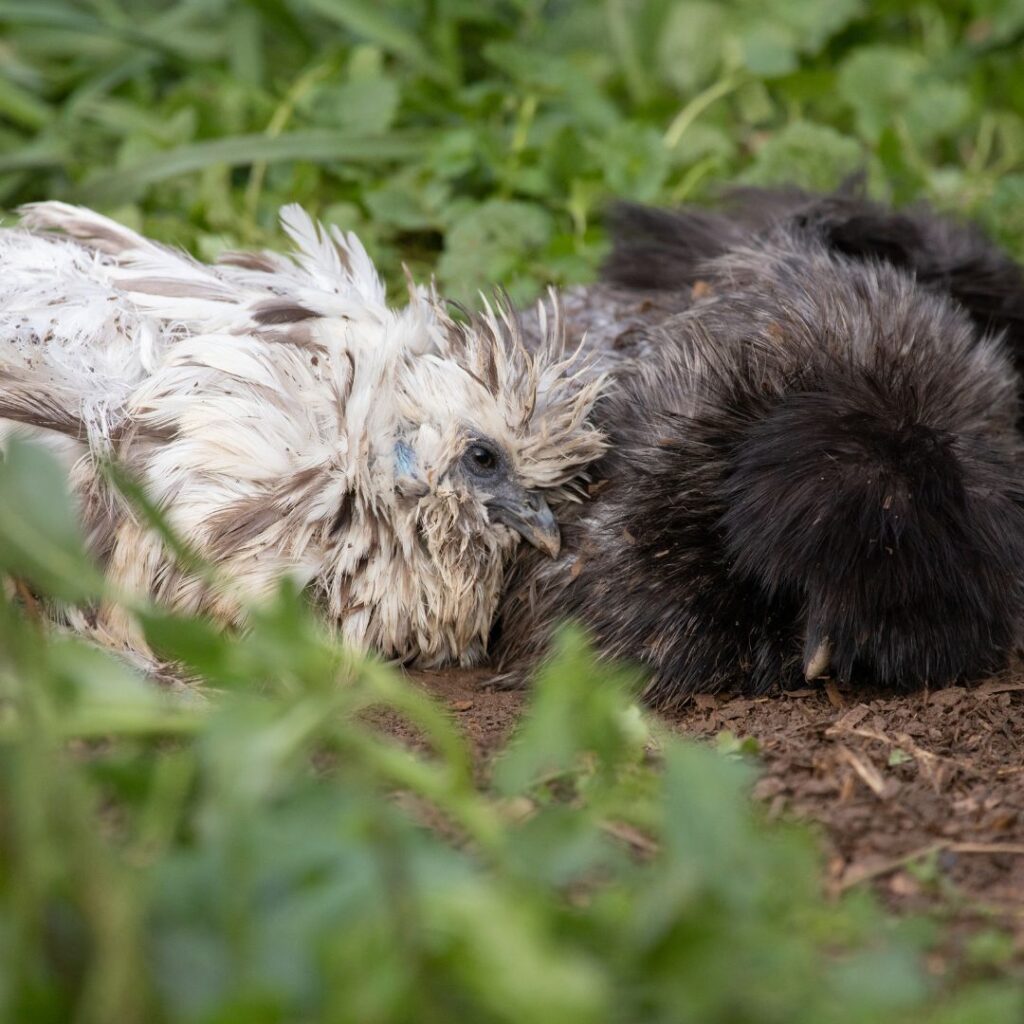
What ingredients are used in a chicken dust bath
A dust bath is a mixture of dirt and sand that chickens enjoy rolling around in to clean their feathers and keep themselves cool. In order to keep your backyard flock happy and healthy, it’s important to provide them with a dust bath. There are many different ingredients that can make up a good dust bath for chickens, but some of the best include sand, dirt, ash, and herbs.
Adding herbs to the dust bath: Some herbs, such as lavender or mint, can help repel pests and parasites.
Adding dried herbs to the dust bath is important for backyard chicken owners and hobby farmers because it can help to repel pests and parasites. Some herbs, such as lavender or mint, also have a soothing smell that can help to relax your birds. This can be important for backyard chicken owners and hobby farmers who are trying to keep their flocks calm and stress-free.
You can dry your own garden herbs or buy them in bulk at garden centers or online. Adding more during buggy months.
Don’t overstock, the shelf life on these items whether done yourself or store-bought doesn’t carry the lifetime use as sand does. It’s approximately 1-year shelf life in proper conditions.

Using wood ash: Wood ash can help to absorb oils and repel pests.
Wood ash can be an important part of a chicken’s bathing routine. It can help to absorb oils and repel pests. Wood ash is one of our recommended natural insecticides. This can be important for backyard chicken owners and hobby farmers because it helps to keep the chickens healthy and free from pests.
If you add wood ash, this can also help to keep the dust bath dry. This is important for a backyard chicken keeper and hobby farmers because it helps to prevent the spread of disease.
If you see your flock eating the wood ash, don’t be concerned this is a natural way to cleanse themselves of parasites and toxins.
You can find wood ash free and easily in wood pit areas, wood stoves, and wood pellet stoves. If you don’t have one, ask around. The stoves are popular heating sources for homes.
Wood ash can be stored in metal barrels from your fire pits, wood stoves, and even wood pellet stoves.
Added bonus: Wood ash is great for gardens also!
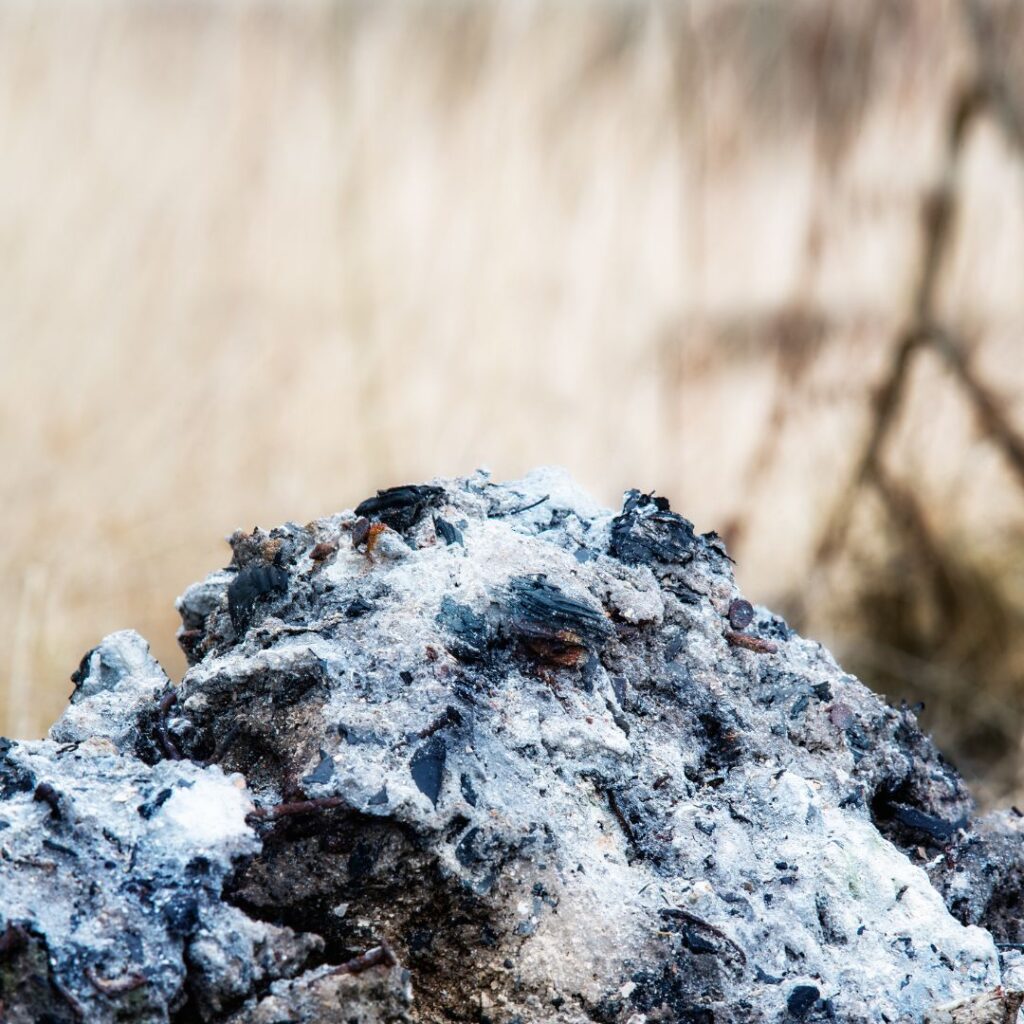
Adding diatomaceous earth: This is a natural product that can help to kill parasites.
Diatomaceous earth is a natural product that can help to kill parasites. This is important for backyard chicken owners and hobby farmers because it helps to keep the chickens healthy and free from pests.
Diatomaceous earth can also help to keep the bath area dry. This is important for backyard chicken owners and hobby farmers because it helps to prevent the spread of disease.
Adding Sand to Dust Bath Mix
Sand is gritty and really helps all the dust bath materials get down through the feather to the skin, it’s a key ingredient in dust baths. Don’t be concerned about buying more expensive, fine sand found in play sand, save your money. You can purchase contractor-grade or all purpose sand. This type varies in granule size and is actually more effective.
This is another additive you may see your bird pecking at. Sands won’t hurt at all if digested, it’s actually like giving your hens oyster shells, improving eggshell strength.

Dried up or Sandy Soil
Do you have naturally sandy soil in your yard or just poor soil? You can scoop some of this up, place it in a 3-4″ layer on an old sheet, tarp, or newspaper, and put it in the sun to dry any excess moisture. This ‘ugly’ dry dirt can be a great free additive to your dust bath. This is more like a dried ‘dirt bath’
Using non-toxic products:
It’s important to use non-toxic products around your chickens, as they are very sensitive to chemicals. Remember, what goes into your birds will also go into your eggs, so keeping a healthy dust bath is just as important as keeping a nutritious diet for your chickens.
What are the signs of mites and lice in your flock?
- Decrease in egg laying/production
- Battered feathered areas, the appearance looks dirty, can also appear faded/washed out
- Less Active
- Pale comb
- Decrease in appetite, weight loss
- Reddish/ scabbed areas
Summary
Chicken Health impacts our entire flocks, including egg and meat production. Providing cleaning stations where chickens’ bathe, as we’ve talked about is such an easy, near-free way to maintain great chicken health.

FAQs of Dust Bathing
Q: Can I just use sand or dry soil to dust bathe my birds?
A: If you haven’t already made a dust bath area for your chickens, they may have already answered this. Hens and Roosters who don’t have a designed bathing spot will often dig their own out of instinct to clean themselves in the soil (dirt bath) in the run or in free-range areas.
Q: What are the benefits of using a dust bath for backyard chickens?
A: The benefits are having a healthy and happy bird, and reduced risk of mites and lice in your bird being the biggest benefit.
Q: Are there any non-toxic products that I can use to dust bathe my chickens?
A: You should ONLY ever use non-toxic products in any aspect of raising and caring for chickens.
Dust bath ingredients suggested are dried soil, sand, food-grade diatomaceous earth, wood ash, and herbs.
All of the ingredients we have shared in this article are non-toxic and further, they’re able to be digested with some level of benefit (in moderation).
Q: Can you use Cat litter in a bathing area for Hens and Roosters?
No no, and No! Cat litter contains things like clay, silica dust, and chemicals to produce a more pleasant odor. The biggest reason is the dust it produces is toxic for your chickens as well as humans.
You can use an old litter box for the dust bath container “if” you wash it thoroughly with hot water, soap, and maybe some wood ash, rinse and repeat.
The chemicals in the kitty litter can be absorbed into some litter box materials, so I’d soak it well, scrub and rinse no less than twice before using it for your feathered friends.
Q: Can Peat moss be used in the Chicken’s baths?
A: Yes, Peatmoss is composed of decomposed moss, it’s a dry ‘fluffy’ soil supplement often used to help in gardens to add better drainage properties.
Q: What is the best mixture for a chicken’s bathing station?
A: Start with the primary mixture of dry, loose soil and sandy mixture. Then add about 1/4 more with a mix of diatomaceous earth, wood ash, and dried herbs. There is no magic number. The wood ash, herbs, and diatomaceous earth are added benefits so use them in smaller amounts and you’ll still get a significant impact.

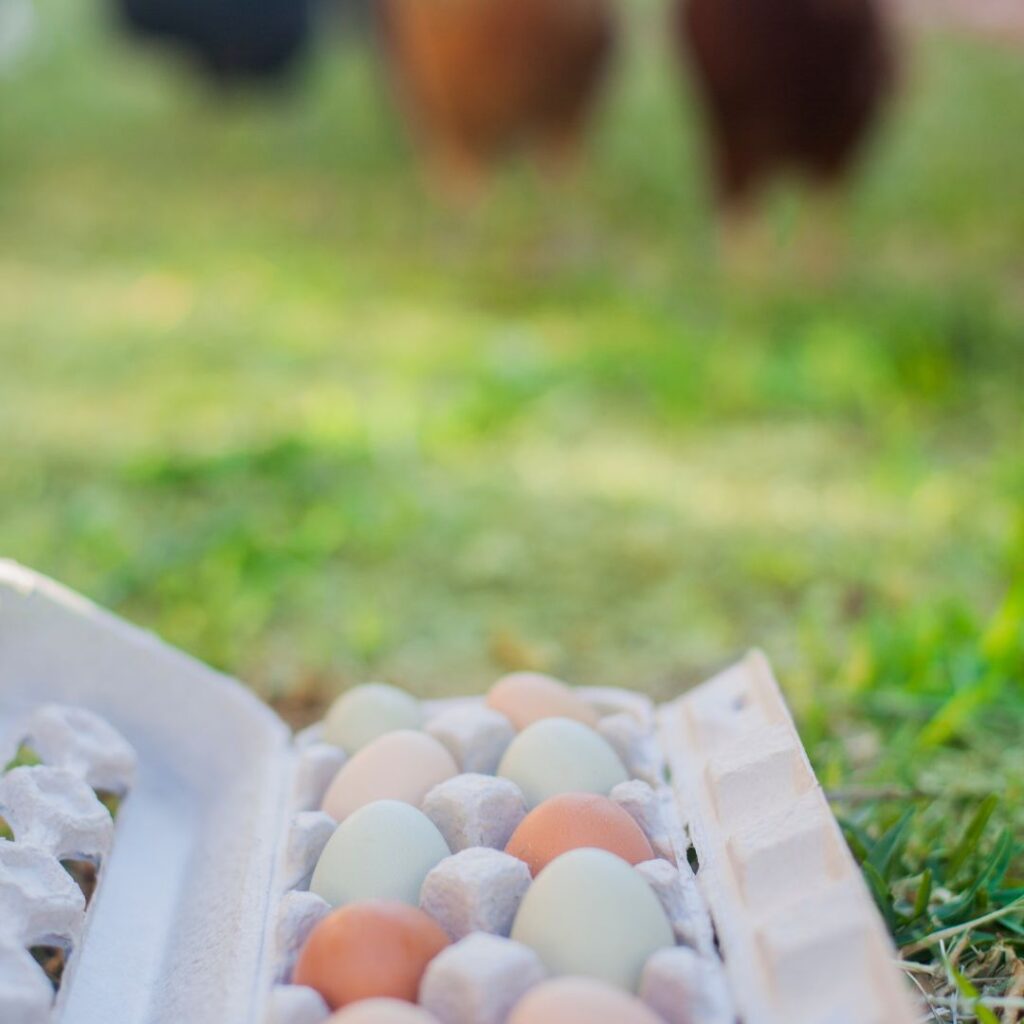

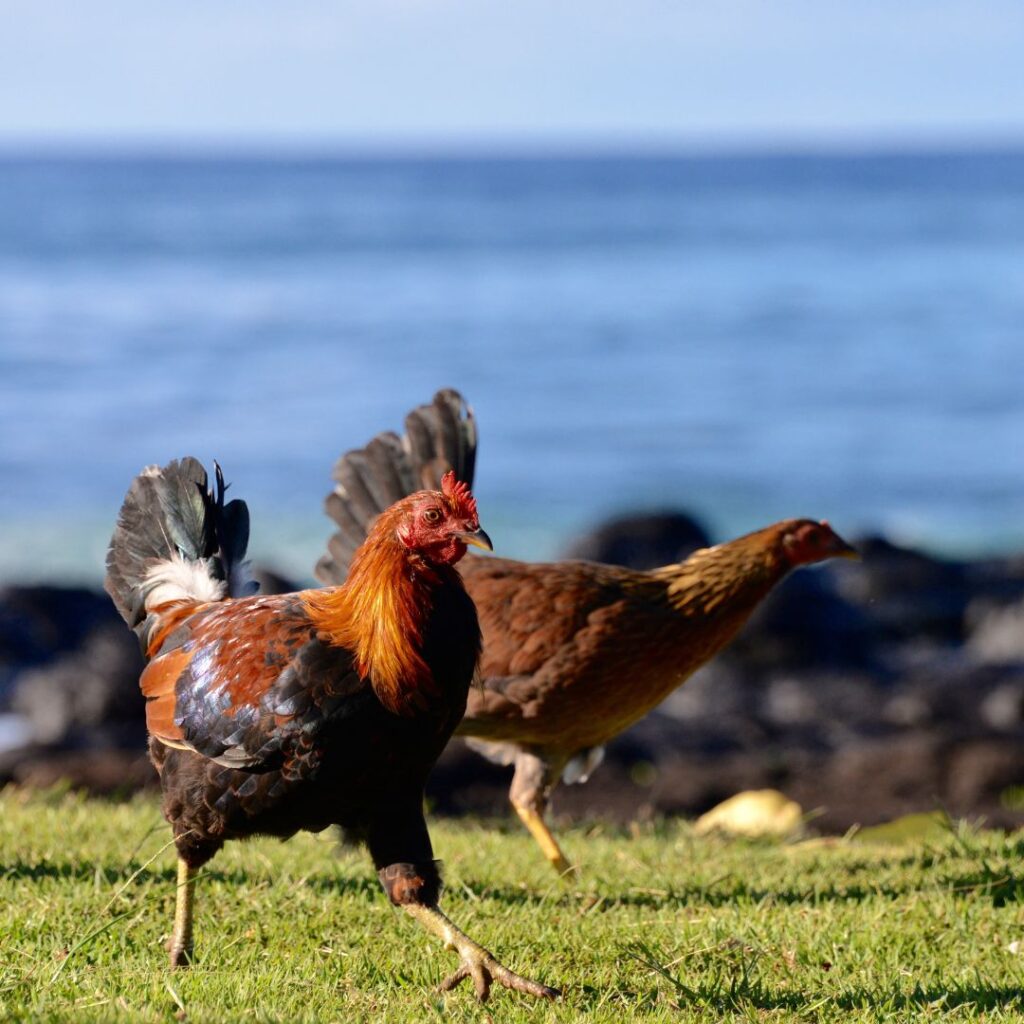
Pingback: Rhode Island Red Chicken: All You Need to Know
Pingback: Brahma Roosters and Hens: All About